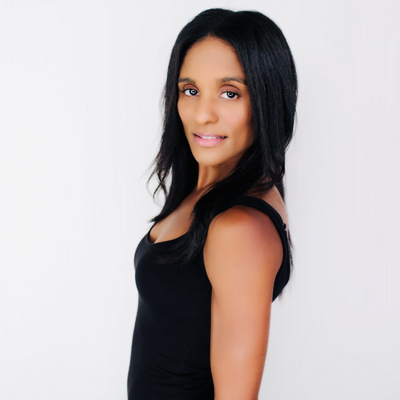Dr. Stephanie Greenspan: Artletic Science

On this episode of the Circuspreneur Podcast, host Shenea Stiletto interviews founder of Artletic Science Dr.Stephanie Greenspan. She is an Associate Professor at Samuel Merritt University, Resident Physio for Club Fugazi in San Francisco , and is chair on the Surveillance of Injuries for Research in Circus (SIRC) consensus working group.
Stephanie brings her background as a dancer, aerialist, aerial coach, and researcher into her clinical practice. She also offers workshops and wellness screenings for pre-professional and professional training programs including Spire pre-professional program at Kinetic Arts Center in Oakland, FlyCo at AWOL Dance Collective and the Elements Training Company at the Circus Project, both in Portland, Oregon. Her research focuses on the study of injuries and movement in the circus arts.
Why is circus arts underrepresented in health and arts research spaces, and what are the consequences?
Circus arts in the U.S. lack institutional presence in universities, which are typically where research and visibility originate. Without degree programs or formal recognition, circus performers often fall through the cracks of research, funding, and healthcare policies. As a result, injury data is pulled from other disciplines like sports or dance, even though circus has unique demands. This misalignment hinders accurate injury prevention, health care support, and advocacy for mental wellness.
Consequences include:
- Inadequate research on injury and mental health risks specific to circus.
- Lack of targeted healthcare services, especially in mental health.
- Circus artists not being counted in labor or tax systems due to missing job classification codes.
- Limited access to funding, grants, and institutional support.
What major research projects are helping advance circus arts medicine and wellness?
Three main initiatives are moving the needle:
1. Injury Surveillance Guidelines:
Led by the CIRC group (Surveillance for Injuries for Research on Circus), this guideline gathers accurate injury data across recreational to professional circus levels. It’s a foundational step to create meaningful prevention strategies.
2. Mental Health Research:
Circus artists experience high rates of anxiety and depression, yet mental health services are rarely embedded in companies. CIRC is publishing a narrative review highlighting the need and potential benefits of integrating mental health support into circus training environments.
3. Concussion Guidelines for Circus:
Sports-based concussion protocols don’t translate well to circus. The new guidelines adapt return-to-play criteria for circus-specific contexts—accounting for spinning, aerial work, and performance environments—to better protect artists from recurring trauma and long-term symptoms.3.
Why is it important for circus arts to be part of conferences like PAMA and IADMS?
Representation at medical and academic conferences allows the circus sector to:
- Share groundbreaking research tailored to circus needs.
- Train healthcare providers who can appropriately support circus artists.
- Learn from other disciplines like dance and sport, which are ahead in health advocacy and research.
Additionally, these spaces offer visibility and networking that can lead to interdisciplinary collaborations. Most importantly, they bridge gaps between artists, academics, and administrators—building support systems where currently there are few.
What systemic changes are needed to improve support for circus professionals in the U.S.?
A few key changes would vastly improve support:
- Recognized Occupational Codes: So circus professionals are visible in labor and census data.
- Accredited Degree Programs: Circus should have academic recognition like music or dance to foster research and training.
- Policy Inclusion: Circus must be written explicitly into arts policy and funding categories (e.g., NEA grants, SafeSport protocols).
- Healthcare Infrastructure: Companies should include health services in grants and budgets, moving toward in-house care like major dance organizations.
Without these systems, circus artists are forced to self-manage care, often with low pay and no institutional support.
How does advocacy tie into the future of circus arts in America?
Advocacy is essential to secure the future of circus arts. In the absence of governmental mandates or infrastructure, advocacy fills the void—fighting for recognition, inclusion, and funding. Whether it’s:
- Lobbying for the Circus Workers Act,
- Pushing for mental health support standards,
- Meeting with legislators in D.C.,
- Or calling for arts-safe legislation,
…it’s crucial that circus professionals—not outsiders—lead this change. Advocacy gives circus a seat at the table and ensures future policies reflect its unique needs.
Key Takeaways
Circus Arts Are Underrepresented
Circus lacks formal recognition in academia, policy, and healthcare, limiting support and visibility.New Guidelines Are Filling the Gaps
Dr. Greenspan’s team is creating circus-specific protocols for injury tracking, mental health, and concussion management.Mental Health Is a Major Need
Circus artists face high rates of anxiety and depression, but rarely have access to mental health professionals.Policy Change Is Essential
Without being named in legislation, circus artists are excluded. Advocacy is pushing for dedicated bills and funding.Collaboration Builds Strength
Partnerships with dance medicine, sports science, and global researchers are helping elevate circus health standards.
Listen to this Episode on:
Spotify / Apple Podcasts / YouTube
Back to Home
Editor's Note: At StageLync, an international platform for the performing arts, we celebrate the diversity of our writers' backgrounds. We recognize and support their choice to use either American or British English in their articles, respecting their individual preferences and origins. This policy allows us to embrace a wide range of linguistic expressions, enriching our content and reflecting the global nature of our community.
🎧 Join us on the StageLync Podcast for inspiring stories from the world of performing arts! Tune in to hear from the creative minds who bring magic to life, both onstage and behind the scenes. 🎙️ 👉 Listen now!
